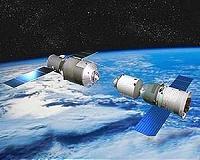 |
Beijing (XNA) Nov 24, 2010 The chief designer of China's second unmanned lunar probe, Chang'e-2, said on Tuesday that the probe's "fate" would depend on its actual condition when it finishes its mission about six months later. The satellite's condition and the needs of the overall moon probe project would determine the choice of the three possible disposal arrangements. These include: crashing into the moon, returning to earth or flying off into outer space, said Huang Jiangchuan at a press conference in Beijing. He said Chang'e-2 had accomplished its various tasks and was currently in a healthy condition. Launched on Oct. 1 this year, Chang'e-2 entered its long-term lunar orbit on Nov. 3, beginning a six-month mission to take high-resolution images of the moon's Sinus Iridum, or Bay of Rainbows. Chinese Premier Wen Jiabao unveiled an image of Sinus Iridum on Nov. 8, marking the success of China's second lunar probe mission. According to Huang, the Sinus Iridum was one of the five proposed landing sites for Chang' e-3, the next lunar probe to be launched in China's moon probe project. But this would depend on conditions at the time of landing. Huang also said the development of Chang'e-3 and Chang'e-4, which he called a "whole new kind of spacecraft", was making good progress. Chang'e-2 was built as an alternative to Chang'e-1, which was launched in October 2007 and completed a 16-month lunar orbit. At the same press conference, Luan Enjie, chief commander of Chang'e-1, said the commercialization of China's aerospace technologies was still in its infancy. "We are far from complete commercialization. This will only be possible after we have established a basic platform, which requires us to make greater efforts in basis systems such as carrier rockets, effective load of satellites, and measurement and control platforms," he said. Huang said the first step towards commercialization of aerospace technologies was the commercial use of these technologies.
Share This Article With Planet Earth
Related Links - The Chinese Space Program - News, Policy and Technology China News from SinoDaily.com
 Tasks For Tiangong
Tasks For TiangongSydney, Australia (SPX) Nov 23, 2010 China's Tiangong 1 space laboratory will launch at some point in early 2011. This spacecraft will later host crews of Chinese astronauts launched aboard Shenzhou spacecraft. We have seen images of the Tiangong module, but we have few clues to what sort of work will be performed aboard it. In the absence of any official list of hardware or tasks, it's worthwhile taking an educated guess. On ... read more |
|
| The content herein, unless otherwise known to be public domain, are Copyright 1995-2010 - SpaceDaily. AFP and UPI Wire Stories are copyright Agence France-Presse and United Press International. ESA Portal Reports are copyright European Space Agency. All NASA sourced material is public domain. Additional copyrights may apply in whole or part to other bona fide parties. Advertising does not imply endorsement,agreement or approval of any opinions, statements or information provided by SpaceDaily on any Web page published or hosted by SpaceDaily. Privacy Statement |